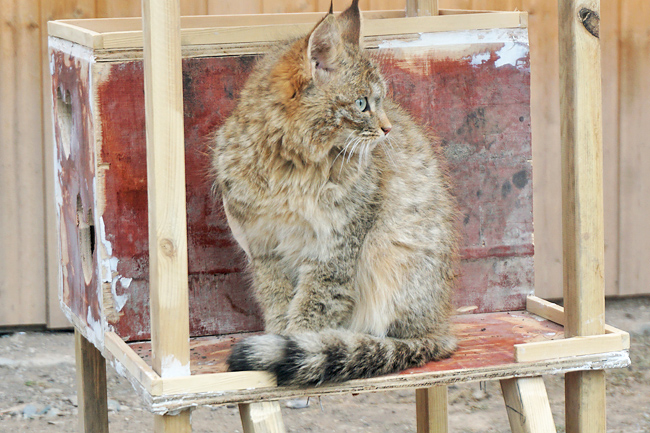XINING (XINHUA) – In a wildlife rescue and breeding station, administered by the Qilian Mountain National Park, a desert cat squatted in front of its den, basking lazily in the sun, while a large vulture stood on the pier and storks flapped their wings vigorously.
The station is located at the foot of the Qilian Mountains in Qilian County of Haibei Tibetan Autonomous Prefecture, northwest China’s Qinghai Province. With an altitude of nearly 3,000 metres, the annual average temperature is only one degree Celsius, a typical plateau continental climate.
Zhang Yuzhen, who graduated from Qinghai University in 2021 with a major in animal medicine, gave up the chance to stay in Xining, the provincial capital, and chose to work at the newly-built base in the mountains.
“Some animals came to the station after they had been separated from their groups. They were so young that we had to feed them milk, and that’s why they are close to people,” Zhang said.
“The vulture was rescued in June 22, 2022. It was infested with parasites, which caused its flight feathers to fall off and it was unable to fly on its own,” Zhang said.

Since its arrival, workers at the rescue station have cleaned and disinfected its wounds, applied insect repellent, and provided it with nutritious meals every day.
“At present, this vulture is more than one metre tall, its flight feathers have basically recovered, and it is in good health. It eats a lamb leg every two days. We are waiting for an opportunity to release it,” she said.
Up to now, the rescue station has received 34 isolated and injured wild animals, among which 26 were under either the first or second level of state protection. Seven have since been successfully released, including one wild animal under the top level of state protection, and four wild animals under the second level of state protection.
Some of these wild animals stay at the station temporarily. After recovering the ability to survive independently in the wild, they will be released into the forest. Some animals do not meet the conditions necessary for release due to injury or illness, and they end up staying at the station for a long time.
Covering an area of about 3,678.9 square metres, the station is one of the rescue and breeding bases on the Qinghai-Tibet Plateau which offers complete functions, advanced equipment and a convenient rescue service. There are four wildlife rescue workers at the station, all of whom were born in the 1990s.
The pilot zone of the Qilian Mountain National Park covers a total area of 50,200 square kilometres, of which the area in Qinghai covers a total of 15,800 square kilometres. A survey shows that there are 280 species of wild vertebrates and 522 species of wild invertebrates in the Qinghai region of the Qilian Mountain National Park.
“The Qilian Mountains are rich in animal and plant resources, which are our precious wealth. At the same time, there are many endangered and rare wild animals in need of rescue. I want to take advantage of my knowledge to build a warm home for these wild animals,” Zhang said.







